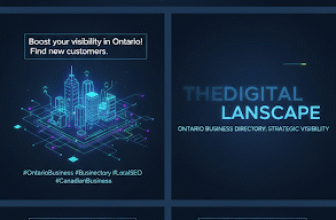
In our day to day life we often try to follow a set path. We always look for certainties and a clear understanding of what we want to achieve. While sometimes taking unpredictable paths can give you a chance to learn and grow from the unexpected experiences, many times these paths can lead to risk and losses as well. On the other hand, planning things in advance can help us execute every task in a systematic manner. The same thing is applicable on project management in which each task affects the chances of success and there is an entire team working on a shared goal. Therefore, in project management “failing to plan is planning to fail.”
For large and complex projects planning is even more important. It will help you as project manager to give clear direction to your team, avoid any kind of resource wastage and ultimately increase the chances of a successful project delivery. In this article I will discuss some important elements of a project plan and a process of project planning which can help you create an excellent project plan and lead to successful project delivery.
What is a Project Plan?
A project plan is like a guiding light for your project from start to finish. It maps out all the goals of your project, specific tasks which are needed to achieve those goals and identifies the resources which are required to get everything done. Let’s take an example, Imagine it as a blueprint for building a house. The plan gives idea about the overall objective (which is building a beautiful home), the specific steps that you need to follow (finding a right place, putting a foundation for you home, making it functional, etc) and finally the materials that you need for these processes (lumber, bricks, wiring, etc).o
Having a clear project plan is important for keeping your project team focused. It will help you to prevent scope creep and will ensure that everyone is working towards the same project goal.
A well-crafted project plan typically includes many key elements. First would be the project scope that defines the project boundaries and outlines exactly what is included and what not. The plan also details the deliverables. Deliverables are the tangible outputs of the project like a finished product or a successful event. Let’s see all these key elements of a project plan in detail.
Essential Elements of A Project Plan
Here is a breakdown of the core elements in a project plan which I have tried to explain with the help of a simple example focused on launching a new website
Project Goals & Objectives: This is the first and a very important section that defines the overall purpose and desired outcomes of your project. In case of launching a website, you need to answer some basic questions like what problem are you trying to solve or what opportunity are you trying to capture with the new website? It can be anything from increasing brand awareness to generating leads. But rather than keeping it vague, try to quantify the results like generating leads by 20% within the first 6 months of launch.
Project Scope: The purpose of this section is to clarify the boundaries of the project. Questions that you may need to answer here are what functionalities will the website have, and what features you consider outside the scope for this initial launch? The website scope includes informative web pages showing the company services, a blog section for sharing industry insights and a contact form for inquiries. Features like e-commerce functionality can be excluded from the initial launch but you can consider them for future updates.
Deliverables: As the name suggests, this section includes all the tangible outputs that mark the completion of your project. For a website launch project the deliverables would include launching a fully functional website which should also be accessible on all devices and a content library with high-quality images and blog articles.
Timeline: In this part of your project plan, you need to create the schedule for completing the project. It is supposed to outline all the deadlines for each individual task and every milestone. Going by our example, the project timeline may show that the website design phase will take 2 weeks, after that 4 weeks will be taken for development and content creation. Finally one-week time for testing to ultimately launch the official website. Individual tasks in each phase can also be written in the timeline for better understanding.
Budget: This section details the financial resources required to complete the project. This could include website development costs, content creation cost and any software licenses which you may need. While website development cost includes web developer fees, for blog content creation you may need to hire a freelance writer.
Risk Management Plan: This section identifies the potential risks that could negatively affect or even derail the project. Along with that it also includes the strategies to deal with those risks. The risk management plan might identify potential risks in website launch like technical glitches during development or delays in content creation. In order to handle the risk some strategies may involve building buffer time into the schedule and having backup plans for content acquisition.
Process of Project Planning
Define Project Goals and Scope:
In this step clearly outline three things – project objectives, scope and deliverables. First, define what you want to achieve with the project and define the project’s scope which is essentially the boundaries of the project. Finally include what will be delivered in this project and what will not be delivered.
Create Work Breakdown Structure:
Break the project down into smaller and more manageable tasks. This can be done using a Work Breakdown Structure (WBS). A Work Breakdown Structure is a hierarchical outline that visually shows the project deliverables and the work required to achieve all those deliverables. To learn more about such concepts, check out our project management resources. Once you have identified the tasks you can estimate the time required to complete each one and create a project schedule.
Identify Resources and Budget:
Determine the resources you need to complete the project like people, equipment, materials, and the financial resources which is your budget. Estimate the costs associated with each resource and develop a budget for your project.
Create a Communication and Risk Management Plan:
Creation of a communication plan is important as it shows how information will be shared between all the stakeholders as well as the project team throughout the project. For this purpose you can use project tracking and team communication software. Also identify the potential risks that could impact the project and develop creative strategies to mitigate those risks on time before they hamper the project success.
Getting Project Plan Approval
Once you are ready with a foolproof plan for your project, you must be able to obtain the approval from all the stakeholders like management, the project board, etc before the commencement of the project. As we discussed earlier, approval for your project plan would be highly dependent on the effectiveness of the project plan. Make sure it consists of all the necessary information we discussed like the scope, deliverables, risk management plan, resources required, budget, schedule, etc. Finally add some visual elements and Gantt charts to make the plan more effective and easy to analyze. This comprehensive document will not only act as a foundation for your project but also help the management in making some of the key decisions even during the course of project execution.







